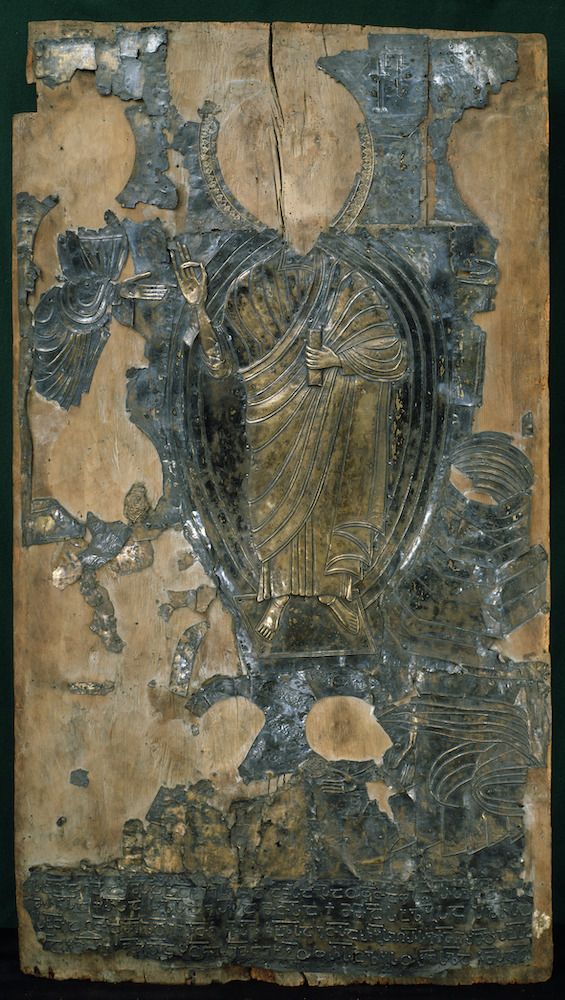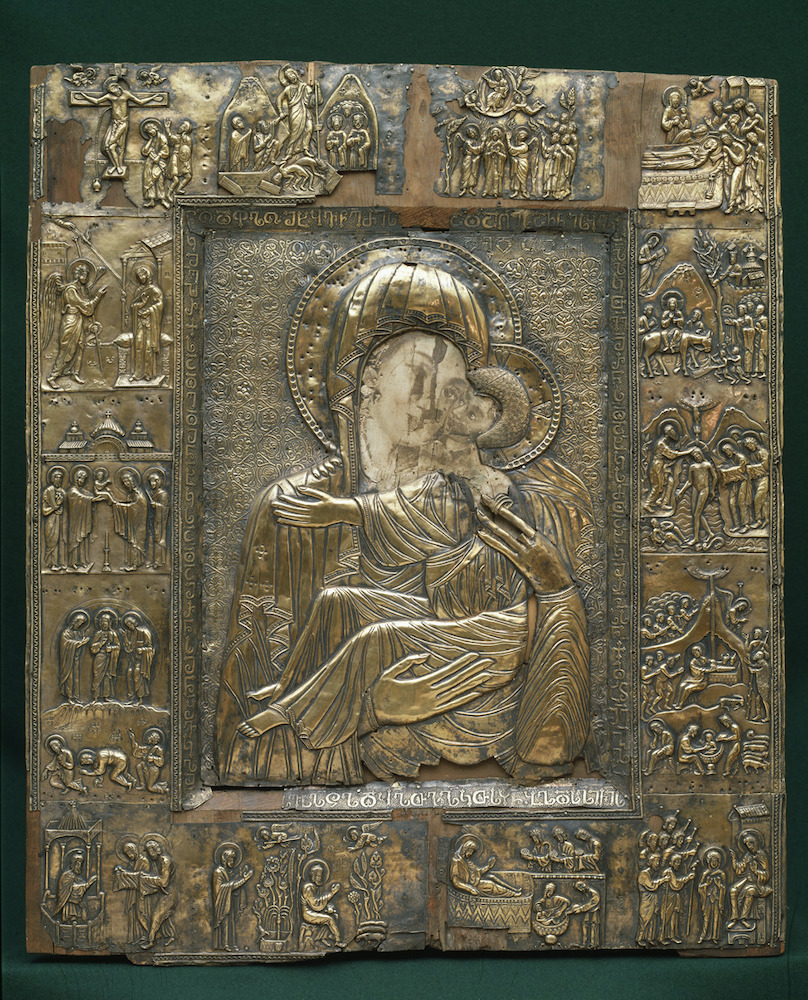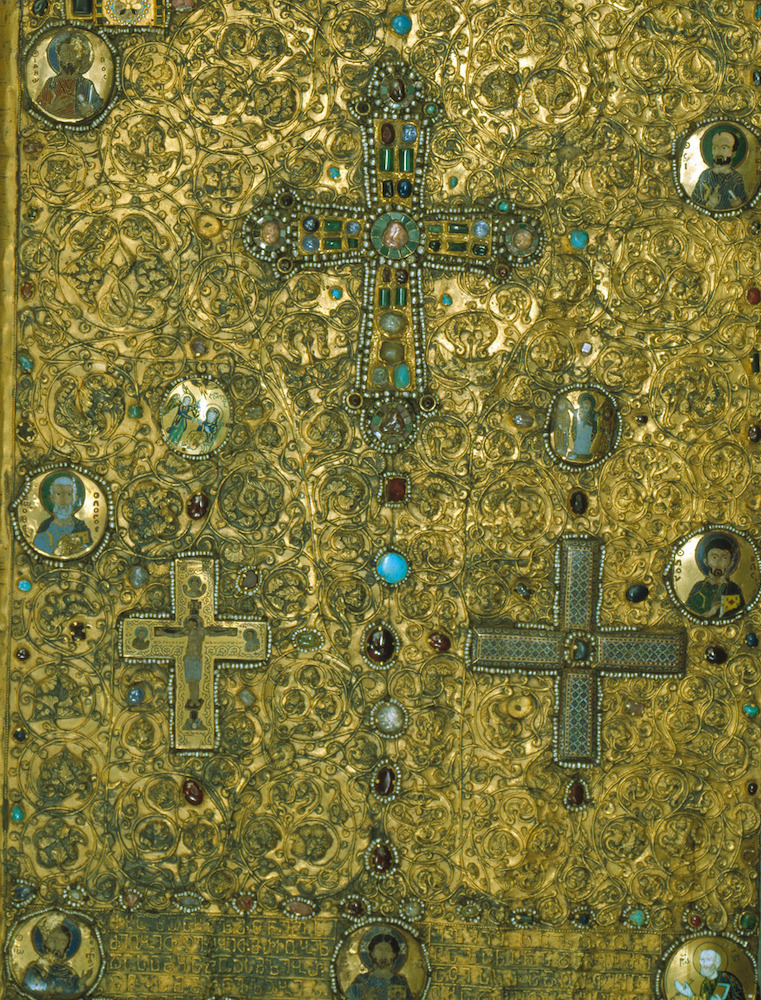
Feel free to add tags, names, dates or anything you are looking for


Georgian metalwork of the Middle Ages is an important phenomenon in the history of art. The ancient local tradition of goldsmith and silversmith has continued throughout the Christian era. Georgian masters produced a wide range of church artifacts: crosses, icons, book-covers, liturgical implements. For their creations, the Georgian masters mainly used silver, which was frequently plated with gold. Some non-ecclesiastical silver vessels from the 12th–13th century have also been preserved along with the precious metal object of church art. Precious metal artifacts often feature the commissioners' names and a date of their execution. There are approximately 2,500 works of repousse that have survived to the present day. They are housed at museums in Georgia and overseas (The Metropolitan Museum of Art, The State Hermitage Museum, and The State Museum of Oriental Art in Moscow among others). The earliest works of medieval Georgian goldsmith art were produced in the 8th and 9th centuries.

Transfiguration Icon from Zarzma, 886
One of the oldest precious metal icon executed in repousse is the Transfiguration Icon from Zarzma Monastery. The inscription of the icon states that in 886 the icon was covered with silver repousse cladding. From the “Life of Serapion Zarzmeli” it is apparent that the miraculous icon of the Transfiguration was placed in the Zarzma Monastery, which was founded by Serapion.

Processional Cross from Ishkhani, 973
Among masterpieces of medieval Georgian toreutics is the processional Cross, created in 973 by order of the Ishkhani Bishop Hilarion. The small figure (approx. 20 cm) of the Crucified Christ on the Ishkhani Cross impresses with its monumentality and evokes a strong emotional response in its viewers. The extant material indicates that the major centers of production of the precious metal objects existed in monasteries. Several advanced monastic workshops were especially significant . Among them the Opizi, Safara and Zarzma monastic workshops were particularly important. One of the impressive works of silversmiths is the icon of the Mother of God and Child commissioned by the representative of Laklakidzes Family from Zarzma Monastery with characteristic compositional and iconographic features.

Laklakidze Icon of the Virgin, 11th c.
An important goldsmithery schools was located in Svaneti, whose crosses and icons draw particular attention by their artistic and technical perfection. The silver icons and crosses created in the workshops of Svaneti are distinguished for their artistically and technically refined quality.

The Mother of God Icon from Chukuli, 11th c.
The surviving inscriptions on the works identify a number of the Georgian masters by name: Asat Mokmedi (10th century), Gabriel Safareli (19th century), Ivane Diakoni (11th century), Philip the Goldsmith (11th century), Gvazavaisdze (11th c.), Beka and Beshken Opizaris (end 12th c. - beginning 13th c.).
The Savior Icon by Giorgi Gvazavaisdze, 11th c.

Processional Cross from Breti. by Gabriel Safareli, 11th c.
The 10th-11th centuries is a period of particular development of silversmiths in Georgia. Among the objects of the church art created in this period are the Golden Chalice of Bedia, icons of the Mother of God from Tsageri, and Labechina, as well as processional crosses, liturgical fans and book covers.

Golden Chalice from Bedia, 999

Liturgical fan, 11th c.
In the 12th-13th centuries, an increased interest in the ornamental-decorative treatment of composition came to the fore. One of the best examples of this tendency is the triptych of the Mother of God from Khakhuli, whose eye-catching splendor is achieved by decorating the entire surface of the icon with multi-colored embossed ornaments, enamels, and precious stones.

Khakhuli Triptych, 12th c. (fragment)
Unlike the previous period, during the 14th-15th centuries, precious metal artifacts were no longer distinguished by high artistic and aesthetic values. Nonetheless, the samples of repousse art from this era have significant historical importance. Among the artifacts dating from this time, the inner parts of the wings featuring Christological narrative compositions of the triptych created for the miraculous icon of Anchi must be named. A certain revival of toreutics can be clearly seen in the 16th century, when the number of regional workshops established in Georgia. The workshop of Kakheti was famous with its repousse icons made of gold. Georgian tradition of goldsmiths and silversmiths was continued by masters of the nineteenth century, who preserved centuries-long artistic and technical traditions.